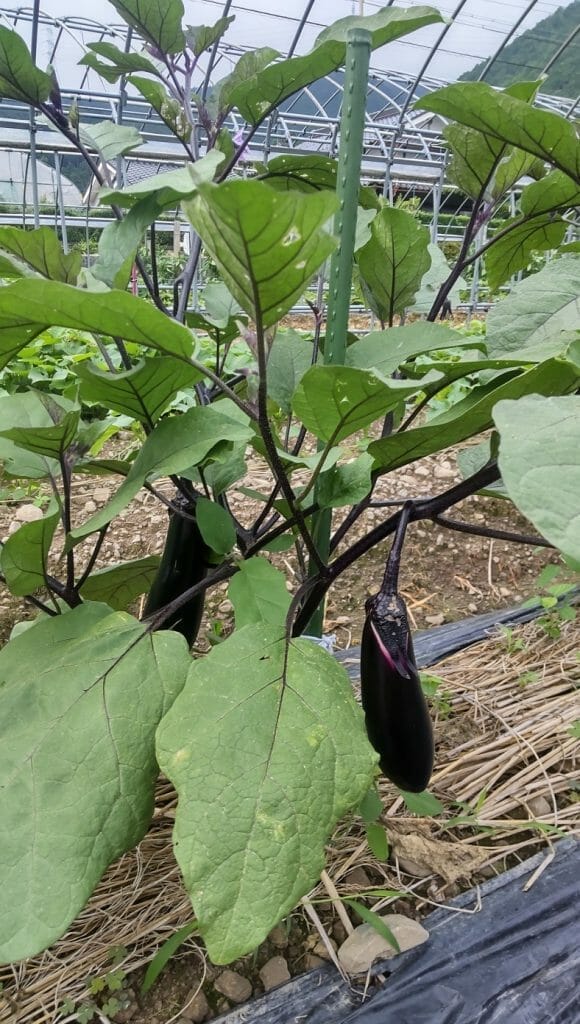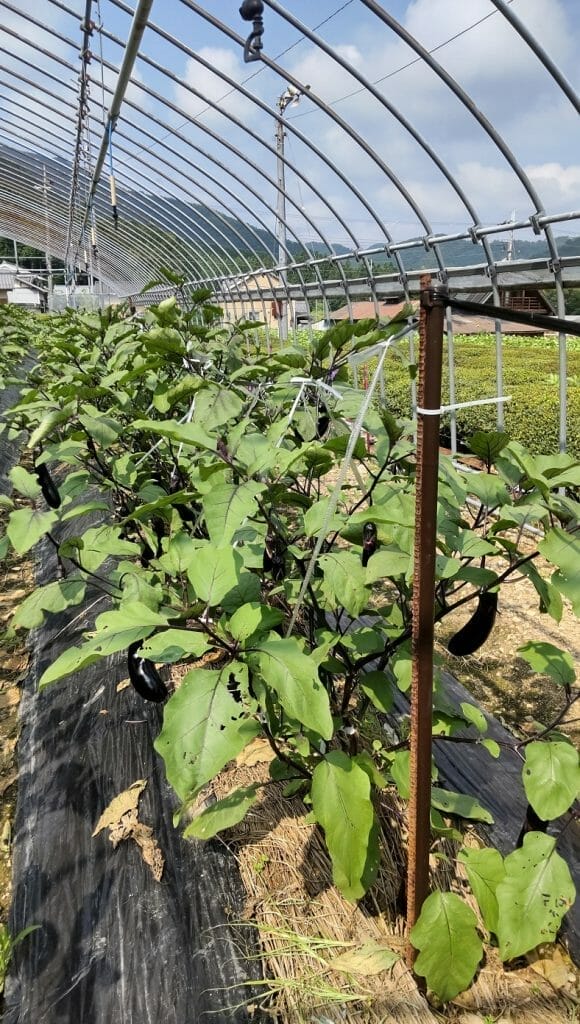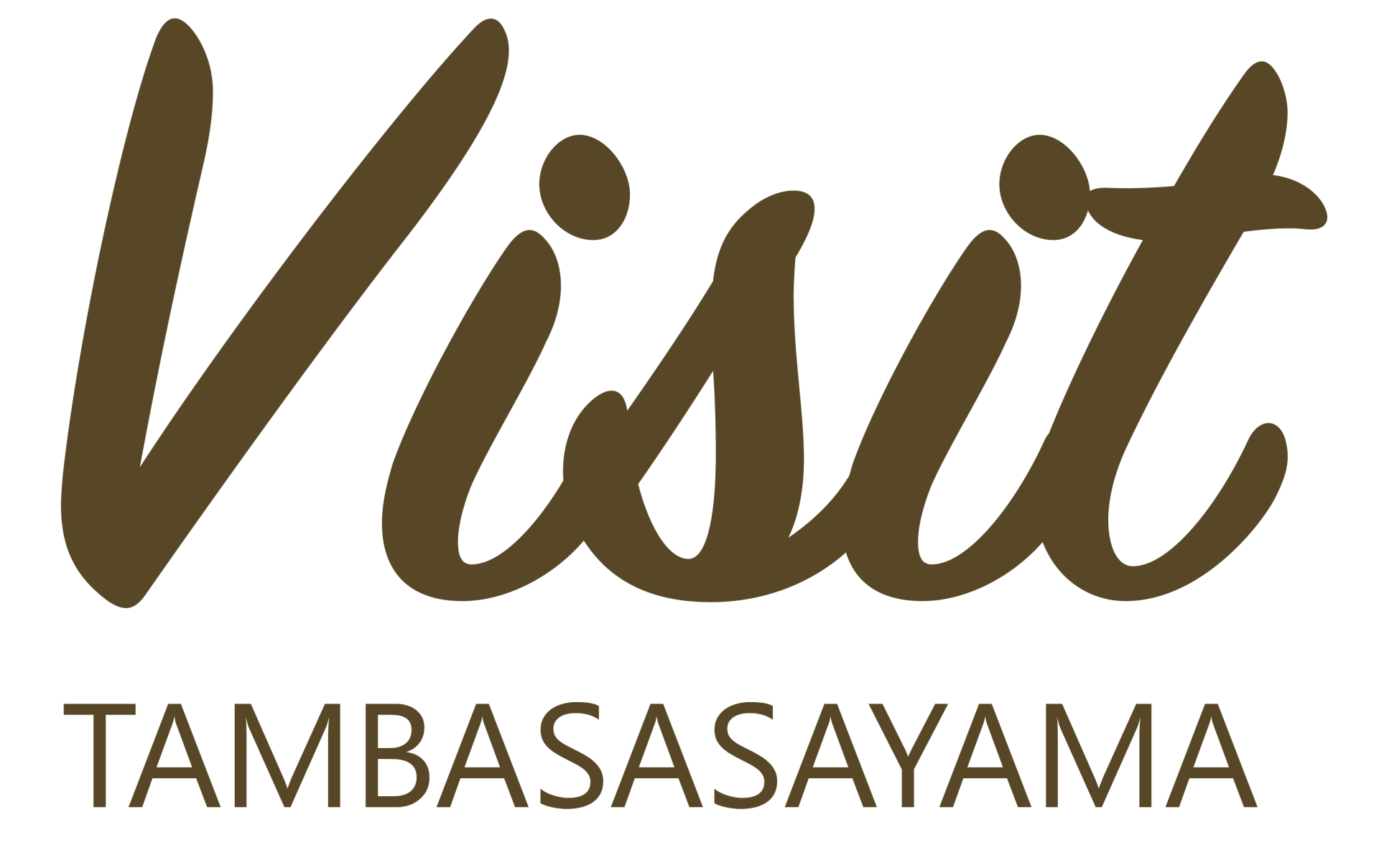Farming in Sasayama

Even after living in Tamba Sasayama City for over 30 years, I’m still taken back by all of the care with which the farmers raise their crops. It explains the very high quality of fruits and vegetables in Japan, as well as the high prices. This article will show a few of the time-consuming ways that farmers here raise a some of their crops. For information on the crops that our area is most famous for and photos of more mature plants and produce, refer to my blog article entitled Fall Delicacies.
It’s worth mentioning that the majority of farmers in our area are either part-time farmers who have a ‘day job,’ or retired people and older people who become ‘full-time’ farmers when they retire. I believe this is true of much of Japan.
Tamba Kuromame (Black Soybeans) and Yama no Imo (Yams: Dioscorea Japonica)
These, along with chestnuts, are some of things Tamba Sasayama is known for.
Yama No Imo
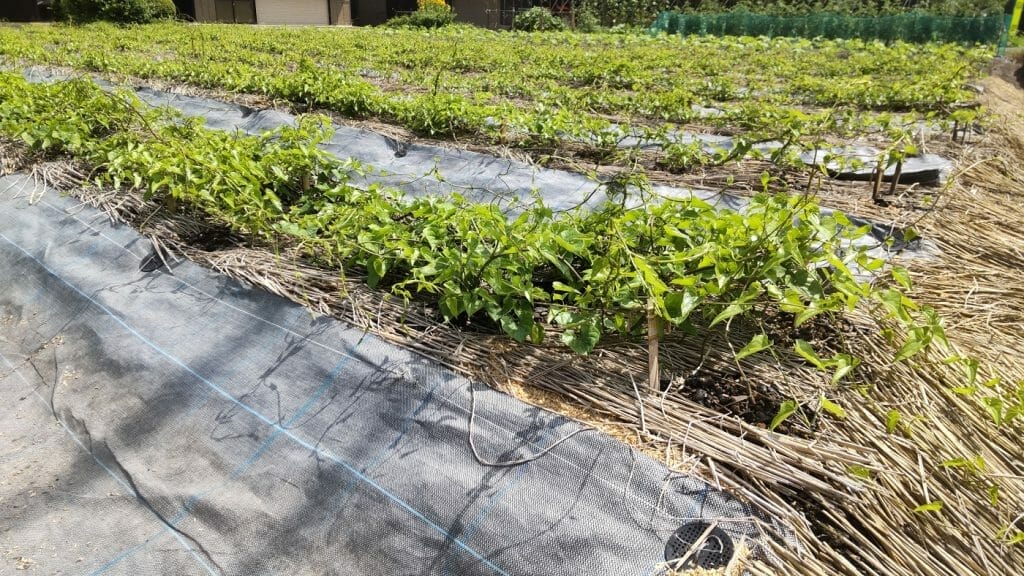
These yams are popular for gifts in Japan and are a must for Botan Nabe (wild boar Nabe). You will rarely see how-to information on growing these for weekend farmers due to the difficulties in raising them. It took us years to get good at them, and then only with a lot of advice from a local farmer. (The first few years, we could have sworn that the seed yams were larger than the yams we harvested in the fall, so we put them back in the ground and waited another year.)
It was hard to think of photos that would show all the work these yams require. Basically they plant the seed yams in high rows made of highly fertilized soil, cover everything with rice straw, and often put woven plastic sheets between the rows. The yams required a lot of fertilizer. (I’ve been told you really cannot overdo it.) The high rows are to prevent the yams growing underground from getting too wet in the rainy season. The rice straw and woven sheets are to hold back weeds and prevent drying. That’s when all the work starts. Pretty much every day someone wanders down the rows and twists the yam vines around each other or around supports to keep them off the ground. At the same time, it’s necessary to keep the yams from getting too dry because if they dry out you won’t get a smooth yam (again, see photo in my article Fall Delicacies) but bumpy ones.
The use of high rows and woven plastic sheets to control weeds and drying is common to many things grown in Japan due to the climate here.
Kuromame
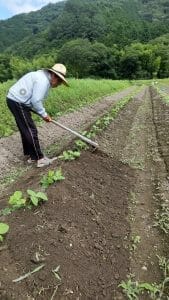 In some ways, Kuromame are even more work than Yama no Imo. First the seedlings are planted in the rich loose soil of the seed beds and rows are prepared. When the seedlings are big enough, they are transplanted into the rows one seedling at a time. This is necessary to keep the birds from eating the young seedlings when they first come up. (You can easily protect the seed bed but not the entire garden.)
In some ways, Kuromame are even more work than Yama no Imo. First the seedlings are planted in the rich loose soil of the seed beds and rows are prepared. When the seedlings are big enough, they are transplanted into the rows one seedling at a time. This is necessary to keep the birds from eating the young seedlings when they first come up. (You can easily protect the seed bed but not the entire garden.)
As the plants grow in the rows, the soil on both side of the rows is hoed to cover the bottom portion of the plants to stimulate root growth (see photos) and help hold up the plants. Another week or two later, the process is repeated. Then stakes are driven along the rows and cords are run down both sides of the plants and secured at the end to prevent the plants from falling or getting blown over as they get taller (see photos). (Remember, autumn, when the plants get tall, is typhoon season in Japan.)
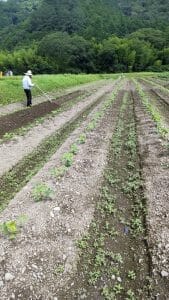 As the plants grow, they are fertilized and sprayed for insects two or three times. The problem is to fertilize just enough and watch the balance of nutrients. We didn’t know this when we first started and ended up with magnificent plants with no soybeans. Also, we tried no spaying for a few years and got away with it, but eventually the insects (e.g., stink bugs) found our garden and, after a couple of years with no soybeans to show for our labor, we decided to spray, but only once rather than the normal three times.
As the plants grow, they are fertilized and sprayed for insects two or three times. The problem is to fertilize just enough and watch the balance of nutrients. We didn’t know this when we first started and ended up with magnificent plants with no soybeans. Also, we tried no spaying for a few years and got away with it, but eventually the insects (e.g., stink bugs) found our garden and, after a couple of years with no soybeans to show for our labor, we decided to spray, but only once rather than the normal three times.
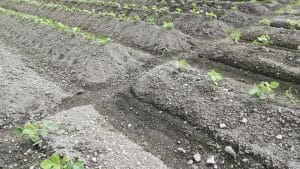

Also, Koromame will flower almost continuously at first, but if they don’t have enough water when they flower they will not produce soybeans well, so watering at the right time is also essentially.

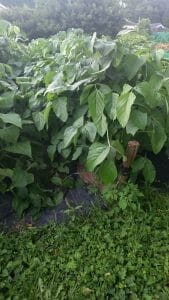
I’m afraid I don’t have any photos right now, but even harvesting the soybeans is a lot of work, particularly if you want to eat or sell them as fresh beans, which are very popular and great with beer (or without, for that matter). Although the history of this is not that old, now when the fresh beans are harvested in the early autumn, you leave them on the main stocks, but cut away all of leaves, leaf shoots, and everything else you can. So in the harvest season, you can see all of our neighbors sitting in sheds cutting off leaves and stems to all hours of the night. (This is a major cash crop for Tamba Sasayama and the surrounding area.) I remember once when I was helping do this, they rejected my first few because everything was not cut off close enough, saying, “Have you no pride in your work.” At least in part, it’s pride that keeps these farmers working so hard.
Tomatoes
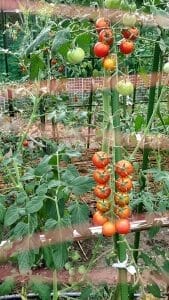 Tomatoes do not like the very wet and humid Japanese environment, so with most varieties, they have to be covered to protect them from rain if you want any hope of a crop. It’s also common to use rice straw under the plants to help protect them from moisture and disease. The plants are controlled and cut back to produce three main forks from the main stem and then tied to supports as they grow, continuously cutting back side shoots to prevent forming too many fruits and ensure proper air flow to help prevent disease. The farmer who let me take most of the photos picks tomatoes by hand one by one, taking only the most ripe ones from each bunch and takes them to the market every morning so that the tomatoes are at their best.
Tomatoes do not like the very wet and humid Japanese environment, so with most varieties, they have to be covered to protect them from rain if you want any hope of a crop. It’s also common to use rice straw under the plants to help protect them from moisture and disease. The plants are controlled and cut back to produce three main forks from the main stem and then tied to supports as they grow, continuously cutting back side shoots to prevent forming too many fruits and ensure proper air flow to help prevent disease. The farmer who let me take most of the photos picks tomatoes by hand one by one, taking only the most ripe ones from each bunch and takes them to the market every morning so that the tomatoes are at their best.
Watermelon
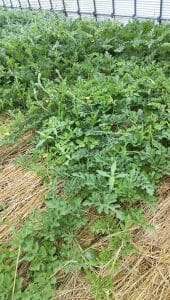 Watermelon are also cut back so that there are only three branches from the main stem. They are also cut back so that those three branches do not branch any further. However, the point of the photo is more to show the rice straw that they used to keep watermelon up off the dampness, just like they do for other produce. Rice straw is hollow and very sturdy and will not rot during the first year in use, so it is excellent for this purpose.
Watermelon are also cut back so that there are only three branches from the main stem. They are also cut back so that those three branches do not branch any further. However, the point of the photo is more to show the rice straw that they used to keep watermelon up off the dampness, just like they do for other produce. Rice straw is hollow and very sturdy and will not rot during the first year in use, so it is excellent for this purpose.
Bell Peppers
Bell peppers are handled the same way as most other corps, i.e., in high rows, but with peppers, they generally use regular plastic sheets rather than woven ones because peppers require less water. (The braided sheets let a lot of the water pass through into the soil.) The same “three branches from the main stem” rule applies here too. The big difference is that the peppers get very heavy as they mature and they produce a lot of fruit that takes time to mature, so supports are introduced along the rows and the branches of the pepper plants are strung up with plastic cords to support them.
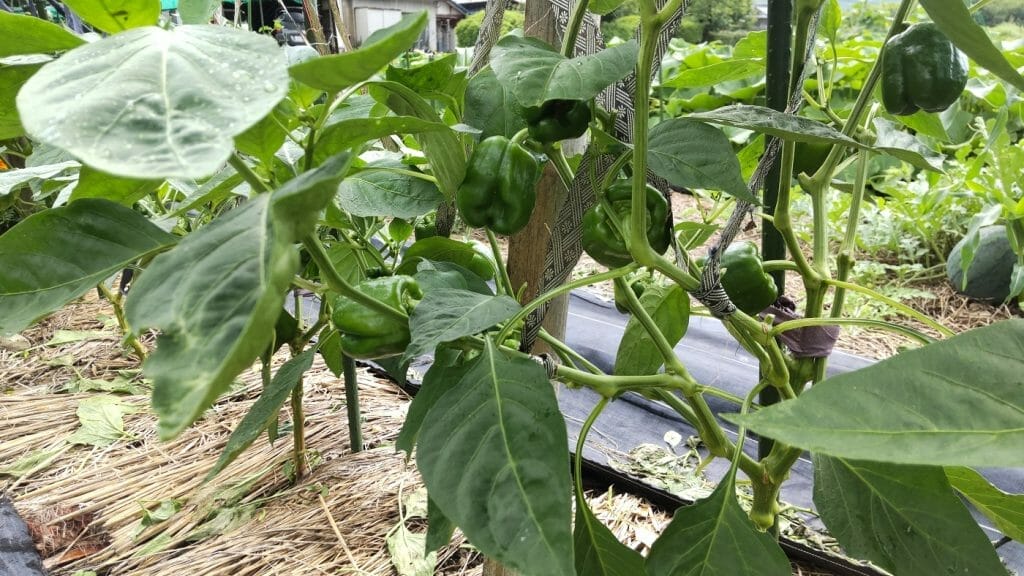

Eggplant
For the most part, these are raised in the same way as bell peppers except for one thing. The leaves of the eggplant age quickly and get eaten by insects, but new leaves come out quickly on healthy plants. As long as you keep the plants well watered and fertilized (but only a little at a time), the only problem with the old leaves is that they block the sunlight and airflow. My farmer friend says the general rule is to cut off two old leaves for every eggplant you harvest, but she admitted that she cuts off a lot more than that, though you cannot tell so by looking at her luscious green plants. Again, she harvests eggplant every morning for the market, and I’ve heard rumors that all of her produce sells first and that she often has to take more later in the day. Obviously all that hard work pays off.